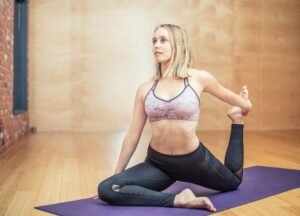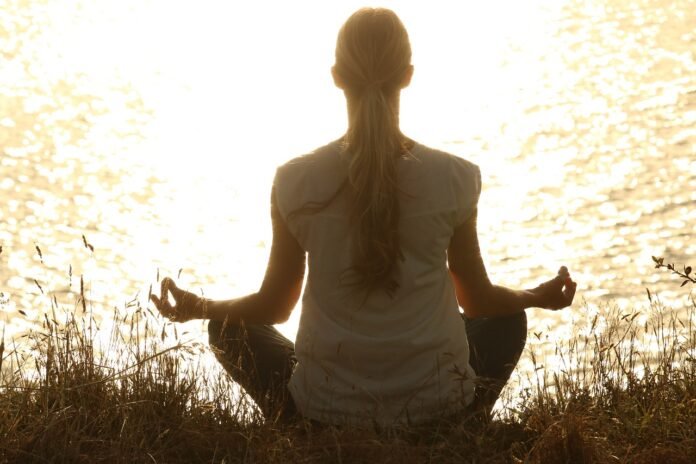Table of Contents
Yoga for Beginners: Start New Journey to Flexibility and Well-Being
Yoga is a timeless practice that has been embraced by people all around the world for its numerous physical, mental, and emotional benefits. Whether you’re looking to increase flexibility, reduce stress, or enhance your overall well-being, yoga provides a holistic approach that caters to beginners and experienced practitioners alike. In this comprehensive guide, we’ll delve into the world of yoga for beginners, helping you embark on a transformative journey towards flexibility and well-being.
Understanding the Essence of Yoga

The Origins and Philosophy of Yoga
Yoga dates back thousands of years to ancient India, where it originated as a holistic system for harmonizing the body, mind, and spirit. Rooted in Indian philosophy, yoga encompasses a rich tapestry of teachings and practices that guide individuals towards self-realization and inner peace.
The Mind-Body Connection: How Yoga Works
Yoga operates on the principle of the mind-body connection, recognizing that physical postures (asanas), breath control (pranayama), and meditation work in harmony to promote overall well-being. By aligning the body and mind, yoga cultivates a sense of balance and vitality.
Getting Started: Essential Tips for Beginners
Selecting the Right Type of Yoga
As a beginner, choosing the appropriate type of yoga is crucial. Hatha yoga, known for its gentle and foundational approach, is often recommended for newcomers. Vinyasa and Iyengar yoga are also beginner-friendly options.
Basic Equipment and Attire
Yoga doesn’t require elaborate equipment. A sticky mat, comfortable clothing, and perhaps a yoga block are sufficient for a fulfilling practice.
Creating a Conducive Practice Space
Designate a peaceful space for your practice, preferably free from distractions. A clutter-free area with good ventilation sets the stage for a meaningful yoga session.
Foundation Poses for Beginners
Mountain Pose (Tadasana)
Stand tall with your feet together, grounding them into the mat. Engage your core, roll your shoulders back, and extend your arms alongside your body. This pose improves posture and body awareness.
Downward-Facing Dog (Adho Mukha Svanasana)
Begin on your hands and knees, then lift your hips upward to create an inverted V shape. Press your palms and heels into the mat, stretching your back and hamstrings. Downward Dog enhances flexibility and strengthens the upper body.
Child’s Pose (Balasana)
Rest on your knees, sit back on your heels, and extend your arms forward. This resting pose is excellent for relaxation and gently stretches the lower back and hips.
Warrior I (Virabhadrasana I)
Step one foot back into a lunge, aligning your front heel with the arch of your back foot. Raise your arms over the head and keeping your front knee bent in this position. Warrior I builds leg strength and opens the chest and shoulders.
The Importance of Breath and Meditation
Pranayama: The Art of Breath Control
Breath is a cornerstone of yoga. Pranayama techniques involve conscious control of the breath to enhance vitality and calm the mind. Deep, controlled breathing brings a sense of focus and relaxation.
Guided Meditation for Inner Peace
Meditation complements yoga by fostering mental clarity and reducing stress. Guided meditation sessions, focusing on your breath or a particular image, can lead to a tranquil state of mind.
Building Flexibility and Strength
Increasing Flexibility Through Yoga
Yoga postures gently stretch and lengthen muscles, gradually increasing flexibility. Regular practice can lead to improved joint mobility and a greater range of motion.
Building Core Strength
Many yoga poses engage the core muscles, contributing to a strong and stable torso. A strong core supports proper posture and reduces the risk of injury.
Balancing Poses for Stability
Balancing poses like Tree Pose (Vrksasana) and Eagle Pose (Garudasana) enhance stability and concentration. These poses challenge your equilibrium while promoting a sense of poise.
Relaxation and Stress Relief
Corpse Pose (Savasana): Deep Relaxation
Savasana is a final relaxation pose, where you lie flat on your back, arms at your sides, and palms facing up. It allows the body and mind to integrate the benefits of your practice and induces deep relaxation.
Yoga Nidra for Stress Reduction
Yoga Nidra, or yogic sleep, is a guided meditation technique that induces a state of conscious relaxation. It’s a powerful tool for reducing stress also it enhancing overall well-being.
Progressing in Your Yoga Journey
Setting Realistic Goals
Establish achievable goals to track your progress and stay motivated. Whether it’s mastering a specific pose or practicing consistently, celebrating small victories fuels your journey.
Exploring Advanced Poses
As you gain confidence and experience, you can explore more advanced poses like Crow Pose (Bakasana) or Wheel Pose (Urdhva Dhanurasana). These poses challenge your skills and build strength.
Incorporating Props for Support
Props like blocks, straps, and bolsters provide support and assist in achieving proper alignment. They are especially beneficial for beginners to deepen their practice.
Nurturing Your Well-Being
Boosting Self-Confidence and Body Image
Yoga encourages self-acceptance and self-love. Through mindful movement and self-awareness, you can cultivate a positive body image and boost your self-confidence.
Yoga for Better Sleep
A regular yoga practice can improve sleep quality by reducing stress and promoting relaxation. Evening stretches and calming poses prepare the body for a restful night’s sleep.
Enhancing Mindfulness and Inner Awareness
Yoga encourages you to be present and fully engaged in each moment. Mindful awareness cultivated through yoga can extend to other aspects of your life, enhancing your overall sense of well-being.
Conclusion
Starting your journey into yoga as a beginner brings about a profound transformation. This practice not only boosts flexibility and physical health but also fosters mental clarity and emotional equilibrium. Embracing yoga’s principles guides you along a path of self-discovery and overall well-rounded development.
FAQs (Frequently Asked Questions)
1. Is yoga suitable for people of all ages?
Absolutely! Yoga is adaptable and can be practiced by individuals of all age groups, from children to seniors.
2. How often should I practice yoga as a beginner?
Starting with 2-3 sessions per week is a good approach. Consistency is key, so gradually increase your practice as you become more comfortable.
3. Can yoga help with weight loss?
While yoga may not be a high-intensity workout, it can contribute to weight loss indirectly by reducing stress and promoting mindful eating habits.
4. What if I’m not flexible at all? Can I still do yoga?
Yes, definitely. Yoga is about progress, not perfection. With regular practice, your flexibility will improve over time.
5. How long should I hold each pose during a yoga session?
In general, aim for 5-10 breaths (about 30 seconds to 1 minute) for each pose. Focus on your breath and listen to your body’s cues.




Recent